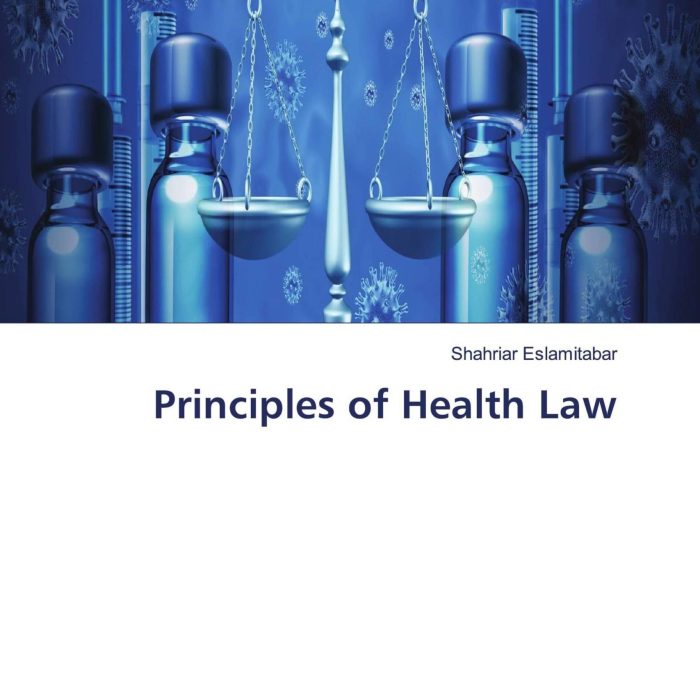کتاب Principles of crisis management: Principles of crisis management in the organization and individual life
۳۹۰,۰۰۰ تومان قیمت اصلی: ۳۹۰,۰۰۰ تومان بود.۱۹۵,۰۰۰ تومانقیمت فعلی: ۱۹۵,۰۰۰ تومان.
| تعداد صفحات | 130 |
|---|---|
| شابک | 978-620-3-92833-4 |
| انتشارات |


کتاب Principles of Crisis Management – اصول مدیریت بحران در سازمان و زندگی فردی
کتاب Principles of Crisis Management اثری جامع و کاربردی است که به بررسی اصول و راهکارهای مدیریت بحران در سطح سازمانی و زندگی فردی میپردازد. این کتاب با ارائه بینشی عمیق و راهبردهای عملی، به مخاطبان کمک میکند تا در مواجهه با بحرانها بهطور مؤثری عمل کرده و از آسیبهای احتمالی جلوگیری کنند.
درباره کتاب Principles of Crisis Management
این کتاب بهطور خاص برای افرادی نوشته شده است که به دنبال راهکارهای علمی و عملی برای مدیریت بحرانها در محیط کار یا زندگی شخصی خود هستند. نویسنده با استفاده از مثالهای واقعی و تحلیلهای عمیق، به مخاطب نشان میدهد که چگونه با برنامهریزی مناسب و اجرای اصولی، میتوان بحرانها را کنترل کرد و از آنها برای رشد و بهبود بهره برد.
موضوعات کلیدی کتاب
- مدیریت بحران سازمانی: راهکارهایی برای شناسایی و مدیریت بحرانها در محیطهای کاری.
- بحرانهای فردی: نحوه مدیریت استرس، تصمیمگیری در شرایط بحرانی و بازسازی شخصی.
- مهارتهای ارتباطی در بحران: اهمیت ارتباطات مؤثر در کاهش آسیبهای بحران.
- برنامهریزی پیشگیرانه: طراحی برنامههای پیشگیرانه برای کاهش ریسک بحرانها.
- رهبری در شرایط دشوار: نقش رهبری و تصمیمگیری سریع در کنترل بحران.
ویژگیهای برجسته کتاب Principles of Crisis Management
- رویکرد علمی و عملی: ترکیبی از تئوریهای مدیریت بحران و راهکارهای عملی.
- مطالعات موردی: استفاده از مثالهای واقعی برای توضیح اصول مدیریت بحران.
- سبک نگارش روان: ارائه مطالب به زبانی ساده و قابلفهم برای همه مخاطبان.
- مناسب برای همه سطوح: چه مدیران سازمانها و چه افراد عادی میتوانند از این کتاب بهرهمند شوند.
چرا کتاب Principles of Crisis Management را بخوانید؟
این کتاب ابزاری ضروری برای افرادی است که به دنبال ارتقای مهارتهای مدیریت بحران خود هستند. با مطالعه این اثر، میتوانید اصولی را بیاموزید که به شما کمک میکند در شرایط بحرانی آرامش خود را حفظ کرده، تصمیمات درستی بگیرید و بهسرعت به شرایط عادی بازگردید.
مخاطبان کتاب Principles of Crisis Management
- مدیران و رهبران سازمانی: برای یادگیری اصول مدیریت بحران در محیط کار.
- کارکنان سازمانها: برای تقویت توانایی مقابله با چالشهای حرفهای.
- افراد علاقهمند به رشد فردی: برای مدیریت بحرانهای زندگی شخصی و پیشرفت در مواجهه با آنها.
- دانشجویان و پژوهشگران مدیریت: برای آشنایی با مفاهیم کلیدی مدیریت بحران.
سفارش کتاب Principles of Crisis Management
برای خرید کتاب Principles of Crisis Management و آشنایی با اصولی که میتواند زندگی و محیط کاری شما را بهبود بخشد، به بخش فروشگاه سایت مراجعه کنید یا با ما تماس بگیرید. این کتاب گامی مهم برای تسلط بر شرایط بحرانی و تبدیل تهدیدها به فرصتها است.
📖 پرسش و پاسخ درباره کتاب Principles of Crisis Management: Principles of Crisis Management in the Organization and Individual Life
📌 درباره کتاب
۱. این کتاب برای چه کسانی مناسب است؟
کتاب Principles of Crisis Management برای مدیران سازمانها، متخصصان مدیریت بحران، مشاوران، و افرادی که در زمینههای مرتبط با بحرانها و مدیریت بحران فعالیت میکنند مناسب است. همچنین برای کسانی که به دنبال درک نحوهی مقابله با بحرانها در زندگی فردی و سازمانی هستند، این کتاب منبعی مفید و کاربردی است.
۲. هدف اصلی این کتاب چیست؟
هدف اصلی کتاب آموزش اصول و استراتژیهای مدیریت بحران در سازمانها و زندگی فردی است. این کتاب به بررسی انواع بحرانها، راهکارهای مدیریت بحران و چرخهی مدیریت بحران میپردازد و راهنماییهایی برای مقابله با بحرانها در سطح فردی و سازمانی ارائه میدهد.
📌 مباحث کلیدی کتاب
۳. چه تعریفی از بحران در کتاب ارائه شده است؟
کتاب بحران را به عنوان یک وضعیت بحرانی و تهدیدکننده تعریف میکند که میتواند به طور قابل توجهی بر عملکرد یک فرد یا سازمان تأثیر بگذارد. این بحرانها معمولاً غیرمنتظره بوده و نیازمند واکنش سریع و موثر هستند.
۴. چه اصولی برای مدیریت بحران در این کتاب مطرح شده است؟
کتاب اصول مختلفی برای مدیریت بحران ارائه میدهد که شامل شناسایی بحرانها، ارزیابی خطرات، توسعه استراتژیهای مناسب، ارتباط مؤثر با ذینفعان و مدیریت منابع است. همچنین بر اهمیت پیشبینی بحرانها و آمادگی پیش از وقوع آنها تأکید میکند.
۵. چه ویژگیهایی برای یک برنامه مدیریت بحران موثر لازم است؟
کتاب بر نیاز به یک برنامه جامع و انعطافپذیر برای مدیریت بحران تأکید میکند. این برنامه باید شامل ارزیابی تهدیدها، تخصیص منابع، شفافیت در ارتباطات، و آمادهسازی تیمهای بحران باشد. همچنین بر اهمیت تست و بهروزرسانی مداوم برنامه مدیریت بحران تأکید میکند.
📌 نقش رسانهها در مدیریت بحران
۶. نقش رسانهها در مدیریت بحران چیست؟
کتاب به اهمیت نقش رسانهها در مدیریت بحران پرداخته و بر این نکته تأکید دارد که رسانهها میتوانند در اطلاعرسانی صحیح، آرامشبخشی به جامعه و حفظ اعتماد عمومی نقش حیاتی ایفا کنند. کتاب همچنین به انواع مختلف برنامهریزی برای استفاده بهینه از رسانهها در بحران اشاره میکند.
۷. چگونه برنامهریزی رسانهای میتواند در بحرانها کمک کند؟
در این کتاب به بررسی انواع مختلف برنامهریزی رسانهای در بحرانها پرداخته میشود. این برنامهریزی شامل ارتباطات شفاف، پاسخدهی به اخبار کذب، و تأمین اطلاعات بهموقع برای عموم است. رسانهها میتوانند با انتقال اطلاعات صحیح و به موقع به کاهش استرس و مدیریت بحران کمک کنند.
📌 استراتژیها و اصول مدیریت بحران کسبوکار
۸. چه استراتژیهایی برای مدیریت بحران در کسبوکارها مطرح شده است؟
کتاب استراتژیهایی همچون ارزیابی ریسکهای سازمان، شبیهسازی سناریوهای بحرانی، آموزش تیمهای بحران و تدوین طرحهای واکنش اضطراری را بهعنوان اصول اصلی مدیریت بحران در کسبوکارها معرفی میکند. این استراتژیها به سازمانها کمک میکنند که در صورت بروز بحران، بتوانند واکنشی سریع و مؤثر داشته باشند.
۹. چگونه میتوان یک برنامه واکنش اضطراری مؤثر را بررسی و بهروزرسانی کرد؟
کتاب به اهمیت بررسی و بهروزرسانی مداوم برنامههای واکنش اضطراری اشاره دارد. این برنامهها باید با توجه به تغییرات محیطی، تهدیدات جدید و تجربیات گذشته به روزرسانی شوند. بررسی مداوم و تمرین سناریوهای مختلف از جمله ابزارهای کلیدی برای آمادگی بهتر در برابر بحرانها است.
📌 نتیجهگیری و کاربردهای کتاب
۱۰. چگونه میتوان از اصول مدیریت بحران در زندگی فردی استفاده کرد؟
کتاب علاوه بر سازمانها، به مدیریت بحران در سطح فردی نیز پرداخته و نکاتی مانند آمادگی ذهنی، برنامهریزی برای بحرانهای شخصی، و استفاده از مهارتهای حل مسئله در زمان بحران را آموزش میدهد. این اصول میتوانند به افراد کمک کنند تا در مواجهه با بحرانهای زندگی فردی خود نیز تصمیمات بهتری بگیرند.
۱۱. جمعبندی کتاب چیست؟
کتاب Principles of Crisis Management در پایان خود به تأکید بر اهمیت آمادگی و برنامهریزی پیشگیرانه در برابر بحرانها میپردازد. با مرور استراتژیهای مختلف و تحلیل وضعیتهای بحرانی، این کتاب به خوانندگان کمک میکند تا بتوانند بحرانها را به فرصتهایی برای رشد و بهبود تبدیل کنند.
| تعداد صفحات | 130 |
|---|---|
| شابک | 978-620-3-92833-4 |
| انتشارات |
.فقط مشتریانی که این محصول را خریداری کرده اند و وارد سیستم شده اند میتوانند برای این محصول دیدگاه ارسال کنند.
محصولات مشابه
-
کتاب The Grey Stories
۲۱۰,۰۰۰ تومانقیمت اصلی: ۲۱۰,۰۰۰ تومان بود.۱۵۷,۵۰۰ تومانقیمت فعلی: ۱۵۷,۵۰۰ تومان. -
کتاب Principles of Health Law
۸۸۸,۰۰۰ تومانقیمت اصلی: ۸۸۸,۰۰۰ تومان بود.۳۵۵,۲۰۰ تومانقیمت فعلی: ۳۵۵,۲۰۰ تومان. -
کتاب The fundamental particle manifest
۲۱۰,۰۰۰ تومانقیمت اصلی: ۲۱۰,۰۰۰ تومان بود.۱۵۷,۵۰۰ تومانقیمت فعلی: ۱۵۷,۵۰۰ تومان. -
کتاب FEAR AND DESIRE
۲۱۰,۰۰۰ تومانقیمت اصلی: ۲۱۰,۰۰۰ تومان بود.۱۵۷,۵۰۰ تومانقیمت فعلی: ۱۵۷,۵۰۰ تومان.













دیدگاهها
هیچ دیدگاهی برای این محصول نوشته نشده است.